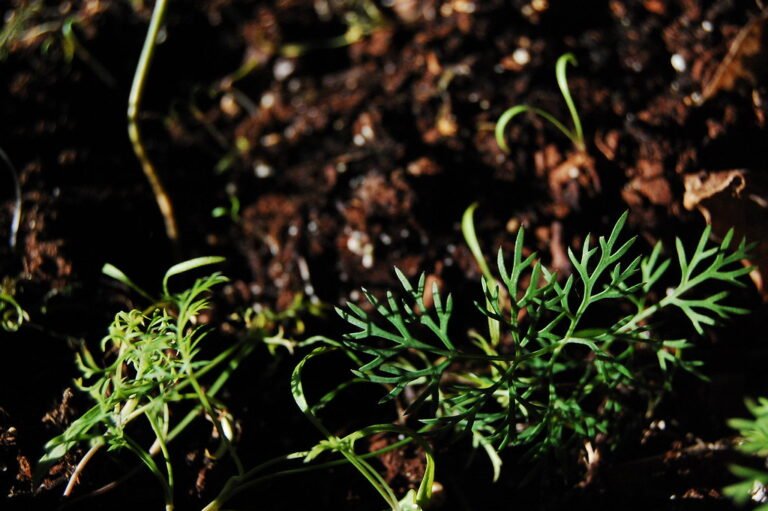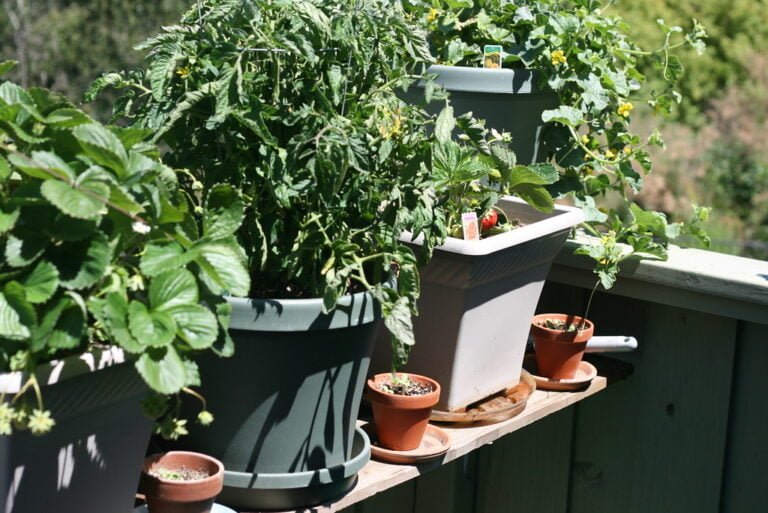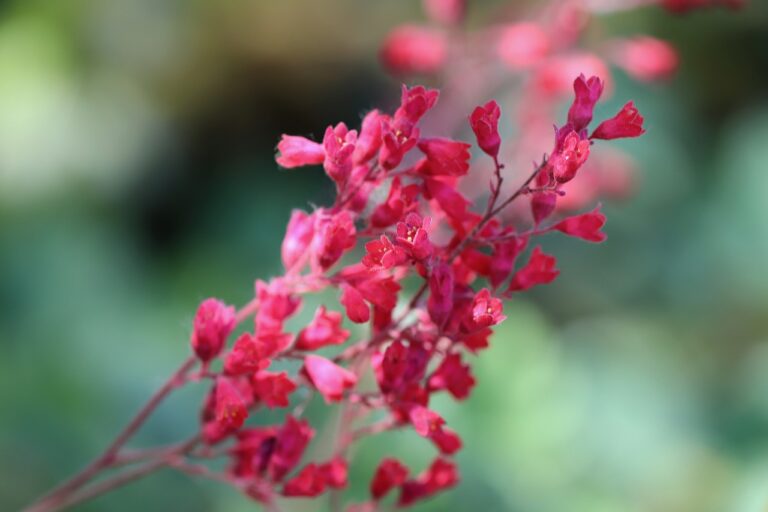Understanding Companion Planting for Beans, Brassicas, and Nightshades
Are you looking to maximize the growth and health of your beans, brassicas, and nightshades? Companion planting is the solution you've been searching for. By strategically pairing these plants with compatible companions, you can enhance their growth, deter pests, and improve nutrient absorption. In this article, we'll guide you through the ins and outs of companion planting, equipping you with the knowledge you need to create a thriving and balanced garden ecosystem. Get ready to transform your gardening experience!
Benefits of Companion Planting
One of the benefits of companion planting is that it can improve the overall health and productivity of your garden. By strategically planting certain plants together, you can create a harmonious environment where each plant supports and benefits the others. This can lead to increased resistance to pests and diseases, as well as improved nutrient uptake and soil fertility. When you choose companion plants that complement each other, you can maximize yield and optimize space in your garden. For example, planting marigolds alongside tomatoes can deter harmful insects and improve the flavor of the tomatoes. Similarly, growing basil near beans can enhance their growth and flavor. By harnessing the power of companion planting, you can create a thriving garden that produces bountiful harvests while minimizing the need for chemical interventions.
Understanding Beans' Companion Plants
To maximize the health and productivity of your bean plants, you can enhance their growth and deter pests by strategically choosing companion plants. Companion planting techniques involve the practice of growing different plants together that benefit each other in some way. When it comes to beans, there are several plants that can be excellent companions. One such companion is corn. Beans are known as nitrogen-fixing plants, which means they have the ability to convert nitrogen from the air into a form that can be used by plants. Corn, on the other hand, requires a lot of nitrogen to grow. By planting beans and corn together, you can provide the corn with the nitrogen it needs while the beans benefit from the shade provided by the cornstalks. Another great companion for beans is lettuce. Lettuce has shallow roots and grows quickly, providing shade for the bean plants and helping to retain moisture in the soil. This can be particularly beneficial during hot summer months when beans may struggle to retain enough moisture. Additionally, lettuce can help to deter pests that may otherwise be attracted to the bean plants. By intercropping beans with lettuce, you can create a mutually beneficial environment that promotes healthy growth and discourages pests.
Effective Companion Plants for Brassicas
When planting brassicas, you should consider the most effective companion plants to maximize their growth and deter pests. Here are some brassica companion plants that have proven to be beneficial:
- Marigolds: These vibrant flowers not only add beauty to your garden, but they also repel pests like cabbage worms and aphids.
- Nasturtiums: These fast-growing flowers act as a trap crop, attracting pests away from your brassicas.
- *Tip*: Plant nasturtiums around the perimeter of your brassica bed for maximum effect.
- Dill: This aromatic herb attracts beneficial insects like ladybugs and lacewings, which feast on aphids and other brassica pests.
- Borage: With its attractive blue flowers, borage attracts bees and other pollinators, ensuring that your brassicas get properly pollinated.
- *Tip*: Plant borage near your brassicas to enhance their growth and overall health.
Companion Planting Strategies for Nightshades
For successful companion planting with nightshades, choose suitable companion plants that enhance growth and deter pests. Interplanting options for nightshades include herbs like basil, borage, and marigold. These herbs not only repel pests but also attract beneficial insects like bees and butterflies, which aid in pollination. Additionally, planting onions or garlic near nightshades can deter aphids and other common pests. Another effective technique is planting companion plants that provide shade and protect the delicate nightshade plants from harsh sunlight. Tall companion plants such as corn or sunflowers can provide this shade. Finally, consider planting legumes like beans or peas near nightshades as they help improve soil fertility through nitrogen fixation. By employing these companion planting techniques, you can create a healthy and thriving garden with your nightshade plants.
Pest Control Through Companion Planting
One effective method for controlling pests through companion planting is by selecting companion plants that repel or deter common garden pests. By utilizing natural pest control methods, you can protect your crops without resorting to harmful chemical pesticides. Here are some companion planting methods to consider:
- Planting marigolds near your bean plants can help repel harmful insects such as aphids and nematodes.
- Interplanting basil with your brassicas, such as cabbage or broccoli, can deter cabbage worms and aphids.
Remember to plan your garden layout strategically. Grouping plants with similar pest-repelling properties together can enhance their effectiveness. Additionally, rotating your crops each year can help prevent the build-up of pests in the soil. Implementing these companion planting techniques can help you maintain a healthy and pest-free garden without relying on synthetic chemicals.
Maximizing Yield With Companion Planting
To maximize your yield with companion planting, strategically select companion plants that enhance the growth and productivity of your beans, brassicas, and nightshades. One effective technique for increasing productivity is intercropping, which involves planting different crops together in a way that they benefit from each other's presence. For example, planting nitrogen-fixing legumes like clover or peas alongside your beans can help supply the necessary nutrients for healthy growth. Additionally, intercropping with aromatic herbs like basil or marigold can deter pests and attract beneficial insects, further boosting yield. Another technique is to choose companion plants that have different growth habits or root depths, allowing them to occupy different layers of the soil and maximize space utilization. By implementing these intercropping techniques, you can optimize your garden's productivity and enjoy a bountiful harvest.
Companion Planting: A Natural Fertilizer Boost
Boost your garden's fertilizer naturally through companion planting. By strategically planting certain crops together, you can enhance the nutrient levels in your soil and promote healthy plant growth. Here are some intercropping benefits that can help you achieve this:
- Nitrogen Fixation: Certain plants, such as legumes like beans, have the ability to convert atmospheric nitrogen into a usable form for other plants. By interplanting nitrogen-fixing crops with nitrogen-hungry plants like brassicas and nightshades, you can naturally boost the nitrogen levels in your soil.
- Natural Pest Control: Companion planting can also help deter pests and reduce the need for chemical pesticides. For example, planting aromatic herbs like basil or marigolds alongside your vegetables can repel insects and attract beneficial pollinators.
Companion Plants for Improved Nutrient Absorption
To enhance nutrient absorption in your garden, strategically plant companion crops alongside beans, brassicas, and nightshades. Intercropping, the practice of growing different crops together, offers numerous benefits for improved nutrient absorption. By combining plants with different root structures and nutrient requirements, you can create a more efficient and balanced ecosystem in your garden. For example, planting legumes like beans alongside brassicas can help fix nitrogen in the soil, which is essential for healthy growth. Additionally, certain companion plants, such as marigolds, can help repel pests that may hinder nutrient uptake. When intercropping, consider the growth rates, water and light requirements, and root depths of the different crops to maximize nutrient absorption. By incorporating these intercropping techniques, you can optimize nutrient uptake and promote overall plant health in your garden.
Creating a Balanced Ecosystem With Companion Planting
Planting companion crops alongside beans, brassicas, and nightshades helps create a balanced ecosystem in your garden. By incorporating companion plants, you can create biodiversity and enhance soil health, resulting in healthier and more productive plants. Here are some ways companion planting can help you achieve a balanced ecosystem:
- Attracting beneficial insects: Certain companion plants, such as marigolds and dill, attract beneficial insects like ladybugs and lacewings that feed on pests, reducing the need for pesticides.
- Nitrogen fixation: Legumes like beans and peas have the ability to fix nitrogen from the air into the soil, benefiting neighboring plants that require nitrogen for healthy growth.
- Pest deterrents: Some companion plants, like garlic and onions, have natural insect-repellent properties, helping to deter pests from damaging your crops.
Common Mistakes to Avoid in Companion Planting
Avoid these common mistakes when practicing companion planting to ensure successful and productive garden beds for your beans, brassicas, and nightshades. One common mistake is overcrowding plants. While it may be tempting to maximize space, overcrowding can lead to stunted growth and decreased yields. Give each plant enough room to grow and thrive. Another mistake is failing to consider plant compatibility. Certain plants have specific needs and may not thrive when planted together. Research the compatibility of your plants and choose companions that will benefit each other. Neglecting proper soil preparation is also a common mistake. Ensure your soil is well-drained, fertile, and free of weeds before planting. Finally, not rotating your crops can lead to disease and pest problems. Rotate your crops each year to maintain soil health and maximize yield. By avoiding these common mistakes, you can create a successful companion planting system and enjoy bountiful harvests.
Frequently Asked Questions
Can I Companion Plant Beans With Nightshades?
Yes, you can companion plant beans with nightshades. It benefits both plants by deterring pests and maximizing space. Beans fix nitrogen in the soil, which helps nightshades grow. Happy planting!
What Are Some Effective Companion Plants for Brassicas Other Than Marigolds?
Some effective companion plants for brassicas, other than marigolds, include dill, chamomile, and nasturtiums. These plants can attract beneficial insects, deter pests, and improve soil health, promoting the growth and yield of your brassicas.
How Can Companion Planting Help With Pest Control for Beans?
Companion planting can greatly benefit pest control in organic farming. By intercropping beans with certain plants, you can attract beneficial insects that help manage pests. Understanding the role of these insects is key.
Are There Any Specific Companion Plants That Can Boost the Nutrient Absorption of Nightshades?
To boost nutrient absorption for nightshades, consider companion plants like basil, marigold, and parsley. These plants can provide essential nutrients, enhance soil fertility, and deter pests. Try planting them together for healthier and more productive nightshade crops.
What Are Some Common Mistakes to Avoid When Practicing Companion Planting With Beans, Brassicas, and Nightshades?
When practicing companion planting with beans, brassicas, and nightshades, it's important to avoid common mistakes. Some misconceptions include thinking any plant can be a companion and not considering their specific needs.
Conclusion
In conclusion, understanding companion planting is essential for successful gardening. By choosing the right companion plants for beans, brassicas, and nightshades, you can improve pest control, fertilization, and nutrient absorption. Creating a balanced ecosystem through companion planting creates a harmonious environment for your plants to thrive. Remember to avoid common mistakes and experiment with different combinations to find what works best for your garden. Happy planting!






